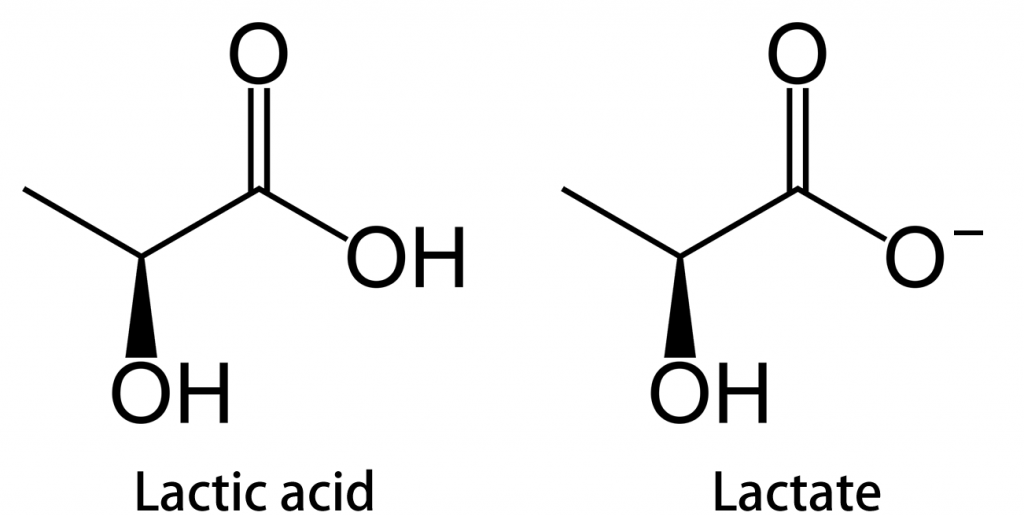We have a limited number of our Wave active compression systems that will be available in Fall, 2020. Join our list to be the first to know when they are offered for sale, opportunities to try the system out in person, and our early-adopter program.

Menu
Lactate or Lactic Acid, is there a difference?
April 10, 2020 | Adam Salamon
You’ve no doubt heard the term, “lactic acid.” We all know it to be the hidden gremlin in our muscles that makes them ache and burn when we’re working hard. It’s so commonly known that you mention “lactic acid” to any athlete and they immediately know what you’re talking about. What if I told you that our bodies don’t produce or use lactic acid? Would you be surprised? Let’s take a look at the difference between lactate and lactic acid.
The Difference a Proton Can Make
Lactic Acid and Lactate are extremely similar; they only differ by a single hydrogen atom! That hydrogen is very important though… to be an acid, a molecule needs to have an extra hydrogen ion to donate. If lactic acid donated that extra proton it has from the hydrogen atom, it would become lactate. So, while talking about your body’s “lactic acid threshold”, “lactate production,” or “lactate” it may just seem like semantics but you’re actually talking about widely different things.
Lactic acid, is actually used in the production of some foods you may have in your home right now. It is used in the yogurt and kefir making process. It’s also the component responsible for giving sourdough bread it’s distinctive flavor. What it is not though, is a hidden bad guy in your body hurting your performance. Blood lactate, or just lactate, is a hidden hero everyone should be aware of!
What is lactate?
When you exercise, your muscles need oxygen to create fuel to power your performance. When these oxygen demands go up, your breathing and heart rates increase to boost the delivery of oxygen to these working muscles. If you work hard enough, your heart and lungs can’t get enough oxygen to your muscles fast enough and your body moves into anaerobic mode. In anaerobic mode, your muscles rely on stored energy for fuel. That stored energy is broken down into a new compound, called pyruvate.
Pyruvate is converted into lactate. Lactate actually counteracts the effects of reduced oxygen levels in your muscles. That familiar burn you feel when you’re reaching your limit is partially caused by oxygen deficiency. Lactate acts as a stand in for oxygen and lets you push longer. Lactate is a finite resource though and can only keep you going for so long. Luckily, you can train to increase your lactate storage capacity and how long you can sustain intense activity.
In a subsequent article, we’ll talk more about the process of training to build your lactate stores. Subscribe to our mailing list to be alerted when we post the next article.
